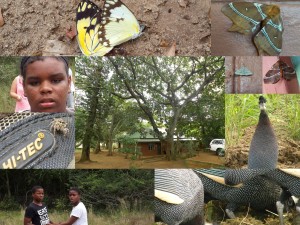Sand Forest is a rare, very distinctive forest type with a unique combination of plant and animal species. As far as is known, this vegetation type is more or less restricted to ancient coastal dunes in northern KwaZulu-Natal and the extreme southern portion of Mozambique (together: Maputaland). Sand forest harbours many rare and unusual plant and animal species.
Sand Forest Lodge just east of Hluhluwe village on the road to Sordwana Bay is a lovely spot. We spent two nights there this week, the kids each taking a friend along.
More:
Sand forests are thought to be relics of coastal dune forests, which have been separated from the ocean for more than a million years as the shoreline has shifted slowly eastwards over the millennia. Dunes have accreted on the southeast African coastal plain since the Pliocene (around 5 million to 2.5 million years before present) and frequent sand mobilization events during climatic changes have resulted in some reworking of the dunes. The geological history of the region suggests that the current ecosystems here may be of recent derivation and many endemic plant taxa comply with the concept of neo-endemics (recent locally evolved species), and biological evolution (notably speciation) is still in an active phase.
Sand forest harbours many rare and unusual plant and animal species, including several Maputaland Centre endemics. Because of its restricted occurrence and unusual species complement, sand forest is perhaps the most unique plant community in the Maputaland Centre. Of the 225 Maputaland Centre plant endemic species, 30 are associated with it and 20 restricted to it. In the case of birds, Neergaard’s sunbird is strongly associated with it.

Plant species that characterise sand forest (licuati forest) are Drypetes arguta, Uvaria lucida subsp. virens, Cola greenwayi, Balanites maughamii, Psydrax fragrantissima, Hyperacanthus microphyllus, Dialium schlechteri, Pteleopsis myrtifolia, Ptaeroxylon obliquum, Croton pseudopulchellus and Newtonia hildebrandtii. The protruding crowns of many of the larger species are usually covered by epiphytes, such as the wiry orchid Microcoelia exilis and various lichens including Usnea spp. (Thanks wikipedia)

And boys will be boys:

~~oo0oo~~



2 Comments